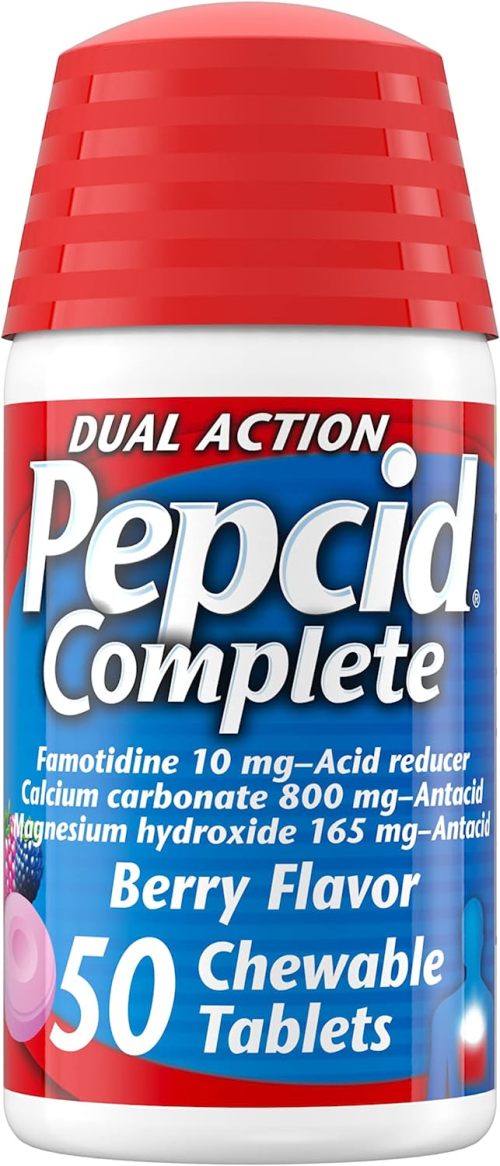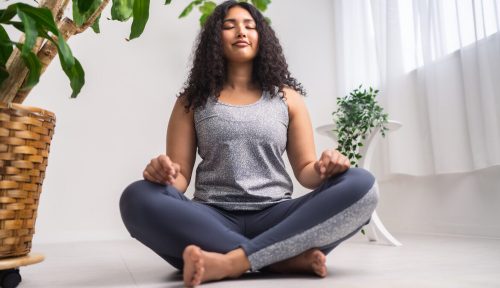Our editors independently select these products. Making a purchase through our links may earn Well+Good a commission
About a month ago, I finally found a yoga class I was happy with—a gentle yoga class, specifically, that doesn’t require much experience (or sweat). But as I got into downward dog, I felt an uncomfortable burning in my throat: acid reflux. Yup, she was no stranger to me.
Experts in This Article
Gina Newton is a certified personal trainer and yoga instructor.
board-certified gastroenterologist based in New York City
Swathi Varanasi, MD, is an integrative medicine specialist.
I imagine other folks have experienced this, too. Acid reflux—which happens when the stomach acid flows backwards into your food pipe or esophagus—can be triggered when you’re not sitting up straight. It can hit when you’re doing something as routine as tying your shoelaces or when you’re challenging your body during exercises like downward dog.
“The position of yoga poses—inverted or flat—can trigger acid reflux, especially if the stomach is still digesting food,” explains Samantha Nazareth, gastroenterology expert with PEPCID®. “Normally, it can take up to four hours for food contents to move from the stomach to the next part of the intestine.”
Determined to not let this issue impede my yoga practice, I asked Dr. Nazareth and a couple other experts to share their best tips for minimizing acid reflux on the mat.
1. Choose your poses wisely
If you’re doing yoga on your own, be mindful of the poses you choose. “Some that are notably helpful for reducing acid reflux are chair, dancer, and mountain pose—all standing poses,” says Gina Newton, a yoga teacher and NASM-certified personal trainer. “Reclining bound angle, warrior I, and triangle poses are also all supportive.”
If you prefer taking yoga classes rather than creating your own flow, Newton recommends sticking “to the slow, gentle yoga versus heated, power yoga in order to bring more peace and calm to your body.”
Just know that you’ll likely have to make modifications. You’ll want to avoid inverted poses, such as downward dog, since they “could cause acid to move up the gastrointestinal tract, from the stomach up into the esophagus, causing an uncomfortable burning sensation,” says Swathi Varanasi, an integrative health pharmacist. If your instructor gives this pose, try alternatives until you find something that feels more comfortable, like a plank or child’s pose, or just take a break whenever the class flows through downward dog.
For any reclined or supine poses, such as savasana, Dr. Varanasi recommends elevating your head so acid can’t move upward. Placing a yoga block or blanket underneath, for example, can help.
2. Be mindful of what and when you eat
Eating too close to a yoga session can trigger acid reflux. Have any meals or snacks at least two hours before, Dr. Varanasi says. Additionally, she suggests avoiding foods that are common triggers, such as alcohol, caffeine, acidic fruits and vegetables (citrus, tomatoes, pineapple), and spicy foods.
3. Take an antacid or acid reducer beforehand
PEPCID Complete® can help with mild acid reflux. “It is a chewable tablet that provides dual action heartburn relief that starts working in seconds and lasts for hours,” Dr. Nazareth says. “It combines an antacid that starts neutralizing acid with an H2 blocker, famotidine, that helps control acid all day or all night.” (However, know that acid control does not imply symptom relief.) Other options include Tums, Pepto Bismol, Rolaids, Alka Seltzer, and Mylanta.

Pepcid, Complete Acid Reducer + Antacid Chews, Berry Flavored — $17.00
4. Embrace yogic breathing techniques
According to a 2013 study in the International Journal of Yoga, certain yoga-related breathing methods, such as Kapal Bhati (feeling your breath in your stomach), Agnisar Kriya (a bent-over breathing exercise that helps with digestion), and Pranayama (controlling the breath) can help reduce acid reflux and other gastroesophageal reflux disease (GERD) symptoms. They can “increase diaphragmatic tone, which helps decrease the ability for acid to flow from the stomach to the esophagus,” Dr. Nazareth explains.
Mindful breathing, along with yoga, can also help with stress and acid reflux generally. “Stress can cause an increase of acid in the stomach; yoga can help reduce stress, therefore reducing acidity in the stomach while also strengthening the lower esophageal sphincter (LES),” Newton says. “It is the breathing that supports reduction in stress, anxiety, and helps strengthen the LES.”
Just be aware that acid reflux can make breathing harder at times. So if breath techniques aren’t working for you today, focus on other strategies. The bottom line is this: Everyone is different, so try out different poses and strategies, and practice for yourself to see what works for you, Dr. Varanasi says.
You got this. Start by trying this gentle flow with any modifications you need:
Sign up for the Well+Good SHOP Newsletter
Get exclusive deals on wellness, beauty, fitness, and food products that have been hand-picked by our editors.
Got it, you've been added to our email list.











